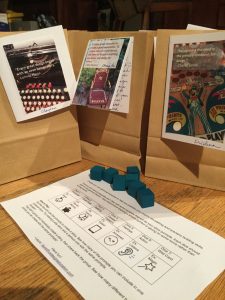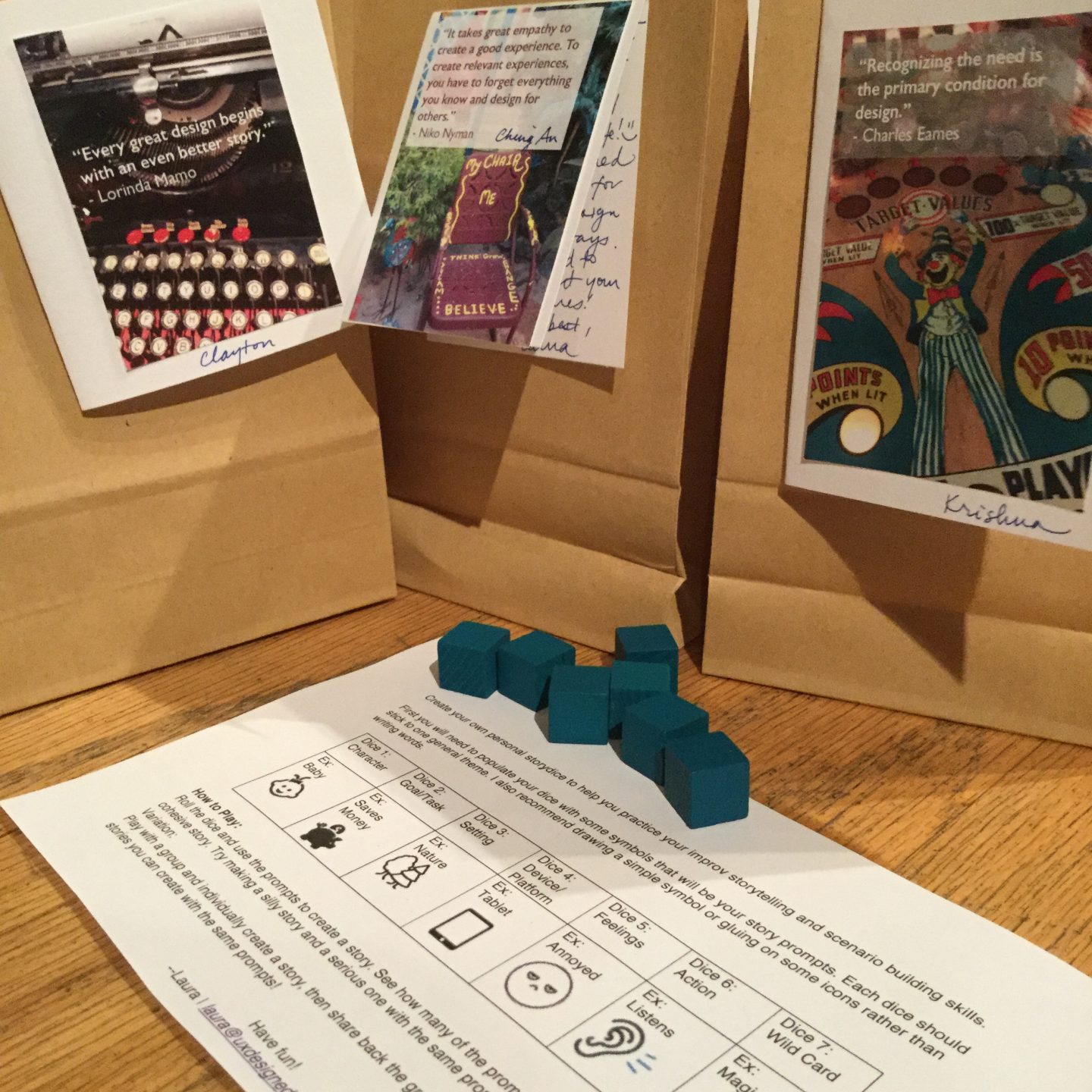One metaphor for good experience design is the impeccable host. One who greets guests, anticipates their likes/dislikes, prepares a menu of intriguing items that will be devoured (or worst case, tolerated), introduces people, stokes conversation, curates some amusements, and then caps the evening off with a nice treat.
This summer I had the privilege of creating a course from scratch, one that I dubbed Spacetime UX. I went a bit meta–I remembered this fictitious, Martha Stewart-esque host metaphor–and I knew that I would have to end the course with some type of a takeaway. A class souvenir! Since we often went analog in class, and invented and played a lot, this souvenir of course would have to hit the same notes.
Then I remembered Storycubes. Though they are intended for children, I always thought there should be a UX design version–something that helps us boring, regimented adults exercise our improv, flash fiction and scenario building muscles.
So building off this and in the spirit of rapid ideation, I whipped together a blank set for each student in my class. I dubbed these Storydice (not terribly creative, I know).

Making a set of UX Storydice
If you’d like to make your own Storydice, here’s what you will need:
7 blank dice (I found wood ones but you could also make your own from cardstock, or even something fancier like polymer clay)
7 themes (1 for each dice)
If you want to keep your themes pretty open-ended you might use:
- Character
- User Goal/Task
- Setting
- Device/Platform
- Emotions/Feelings
- Action
- Wild Card
Though if your work is in a more specific domain, or if you’re trying to solve a particular design problem, I imagine you could narrow your themes down. You could also include some icons that are more abstract/vague that are open for interpretation. And of course you’ll want to include a few silly ones to keep things fun.
What to do:
First you will want to populate your dice with symbols for each of your dice’s themes. I would recommend a simple icon rather than a word. For example, for “Setting” you could draw recognizable icons for:
- Forest
- Hospital
- Home
- Subway
- Airplane
- Amusement Park
How To Play:
After each facet has an icon, you’re ready to roll (literally!) You simply take all of the dice and toss them. Each symbol may be used as a prompt to help create a story–basically it’s a story constraint. See how many prompts you can include and still tell a cohesive story. If you’re with a group, see how many different stories you can tell with the same prompts. Experiment with telling a silly story and a serious one with the same prompts.
If you make interesting variations, or do something fun with your Storydice, please let me know!
If you’re making a blank set as a gift, download instructions herestorydice-instructions-web

